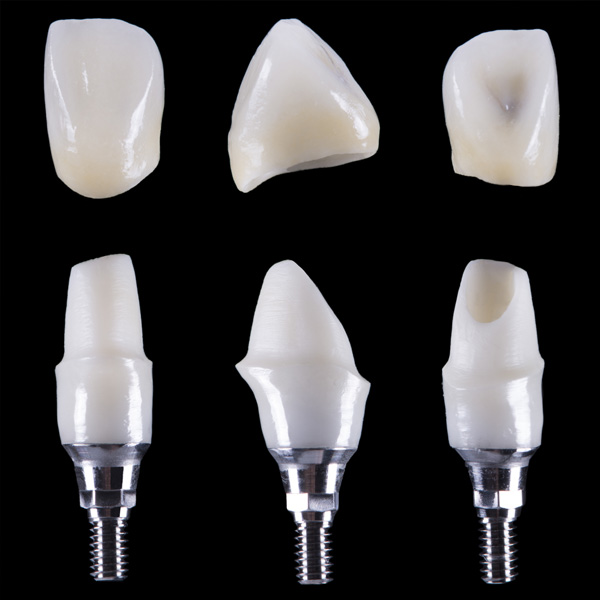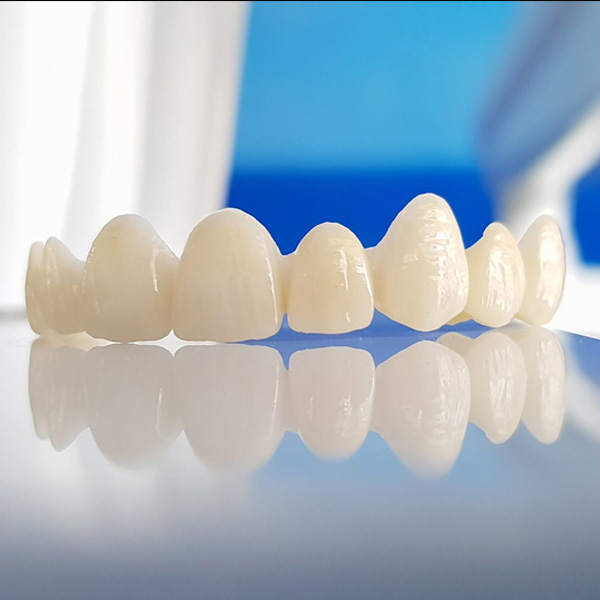Dental fillings are used to replace part of the tooth that has been damaged by decay or worn away by trauma. Restoring the tooth with a filling helps preserve the integrity of the tooth and prevent future damage, which can ultimately help you avoid losing the tooth. Fillings were traditionally made from metal, but today, they can be made from a range of materials including metal amalgam, porcelain, and composite resin. The process of having a dental filling applied is now virtually painless, thanks to the use of local anesthetics. To schedule an appointment for a filling, use a dentist near me search to find the nearest Monarch Dental location. We can assist you with any symptoms, diagnostics, and treatments for your dental needs.
Who Needs Dental Fillings?
Dental fillings are most often used to repair cavities, which are spots of tooth decay caused by oral bacteria. Your dentist can remove the decayed material from your tooth and repair the hole with a filling material. This stops the decay from progressing any further, and it also keeps the tooth strong and resistant to damage such as cracks and chips. Some signs you may have a cavity that requires filling include:
- A constant, dull toothache
- Sensitivity to hot and cold beverages and foods
- The appearance of a black or brown spot on the surface of your tooth
- Sharp pain when biting down on a certain tooth
- Bad breath that does not go away with brushing
Keep in mind that not all cavities cause the symptoms above. In many cases, cavities do not cause symptoms until they have been progressing for a while. See your dentist for regular teeth cleaning and checkup appointments. Your dentist can use tools such as x-rays and lasers to detect small, pinhole cavities before they cause any symptoms. It's often best to fill the cavities at this stage before they begin causing any symptoms, since they present a greater threat to the integrity of the tooth as they continue to grow larger.
Sometimes fillings are needed to address problems other than cavities. If you chip a tooth, your dentist may recommend a filling to repair the chip. Some patients who grind their teeth eventually wear down their enamel to the point that a dental filling is needed to prevent further damage. Biting your nails and using your teeth to open packages may also cause enamel wear and chips that your dentist would need to fix with a filling.
Common Filling Materials
Years ago, fillings were always made from metal; usually either gold or silver was used. Metal fillings were and are very durable, but many patients do not enjoy how obvious they are in the mouth. Thankfully, there are now tooth-colored options, like composite resin and porcelain, which make fillings much less obvious in patients' mouths. Your dentist can help you decide on the best material for your filling based on the location of the tooth that needs filling, your budget, the size of the cavity, and your personal preferences.
Composite Resin
Composite resin fillings are made from a specialized epoxy material that contains silica or ceramic for strength. They can be specially colored to blend in with the natural color of your tooth, which makes them a popular choice for front teeth and other areas that are visible when you smile.
Your dentist does not have to remove as much tooth material when inserting a composite filling as when inserting a metal filling. For this reason, your dentist is likely to recommend composite fillings for larger cavities. One drawback to composite fillings is that they do not last as long as metals. You may need to have your fillings replaced every 10 years or sooner.
Porcelain
Porcelain fillings are also known as inlays. They are the most costly of all of the filling options, but they do last longer than composite resin fillings. Dentists more often use inlays for worn or abraded teeth than for treating cavities.
What To Expect During Your Filling Appointment
Having a tooth filled generally takes between 20 minutes and an hour, depending on the size of the cavity or the extent of the tooth damage. If you need multiple cavities, chips, or worn areas repaired, your dentist may recommend having them all filled during one appointment since this means you'll only need to have your mouth numbed once.
When you arrive for your filling appointment, your dentist will begin by applying a numbing gel to a small area on the inside of your cheek. Once the cheek tissue is numb, your dentist will inject a local anesthetic to numb the tooth that needs work. It will take a few minutes for the local anesthetic to take effect, but when it does, your dentist will begin using a high speed drill to wear away any damaged tooth material. You may feel some pressure and vibrations during this phase of the filling process, but you should not feel any pain.
Once the decayed or damaged material has been removed, your dentist may rinse the tooth with a fluoride solution to prevent further decay. This rinse may have a sour and somewhat unpleasant taste, but it will only be in your mouth briefly. Once the tooth is clean, your dentist may use gauze and some wedges to isolate the tooth to be worked on. Then, he or she will use a special tool to deposit the composite resin or metal amalgam in the prepared tooth. If resin is used, a UV light will be aimed at the filling in order to cure the material. Then, your dentist will again use the drill to shape the filling.
If you have a porcelain filling or inlay applied to your tooth, your dentist will probably complete the procedure across two appointments. During the first appointment, your tooth will be prepared and a mold will be made so that the lab can make you a customized porcelain filling. During the second appointment, your filling will be inserted into your tooth. Some dentists have begun using specialized, computer-aided design programs to design and create the inlay. If your dentist offers this service, you may be able to have a porcelain filling made and inserted in a single appointment.
Caring For Dental Fillings
When you return home from the filling appointment, the anesthetic should wear off after about 1 to 3 hours. Your jaw may be a little sore from having to hold your mouth open from the dentist, but you should not notice any overt pain. Some patients experience some sensitivity in the filled tooth, especially if the cavity was large, but this symptom should fade within a week or two.
For the most part, you should care for a tooth with a filling just as you would a normal, healthy tooth. Make sure you brush and floss the tooth daily to prevent oral bacteria from accumulating on or around the filling. See your dentist for teeth cleaning appointments every 6 months, and schedule regular checkups so that if your filling does become worn or damaged, your dentist is able to detect it early.
You should stay on the lookout for signs that your filling has become worn, chipped, or cracked. Contact your dentist if you develop any of these symptoms:
- Sensitivity in the tooth that was filled
- Pain when brushing or flossing
- Pain when biting down on the tooth that was filled
- Dark coloring in the tooth material surrounding the filling
- A cracking feeling in the filled tooth when biting down on something
- Bad breath that does not go away with brushing
- A toothache
If you notice damage and contact your dentist early, he or she may simply be able to remove the damaged filling and replace it. However, if a damaged filling is left in the mouth for too long, bacteria may begin working their way between the filling and the tooth. This can lead to extensive decay that may require a larger filling or, in more serious cases, root canal therapy.?
How Much Do Dental Fillings Cost at a Dentist Near Me?
The cost of a dental filling depends on the location of the tooth to be filled, the size of the filling, and the filling material that you choose. Silver amalgam fillings are the most affordable and typically cost between $50 and $150. composite resin fillings cost between $90 and $250, and porcelain or gold fillings can cost anywhere from $250 to $4,500.
Keep in mind that in most cases, dental insurance will cover all or most of the cost of a composite or silver amalgam dental filling. Porcelain inlays are not always fully covered.
If you are suffering from a toothache, sensitivity, bad breath, or other symptoms of a cavity or tooth damage, make an appointment with a dentist today. Once your dentist analyzes the extent of your cavity, chip, or crack, they can help you decide on the filling material that best suits your needs.




Our Address
425 Neptune Ave, Brooklyn, NY 11224
Email Us
dds@neptunedentist.com
Call Us
Phone: (718) 449 7676
Fax: (718) 449 7677
